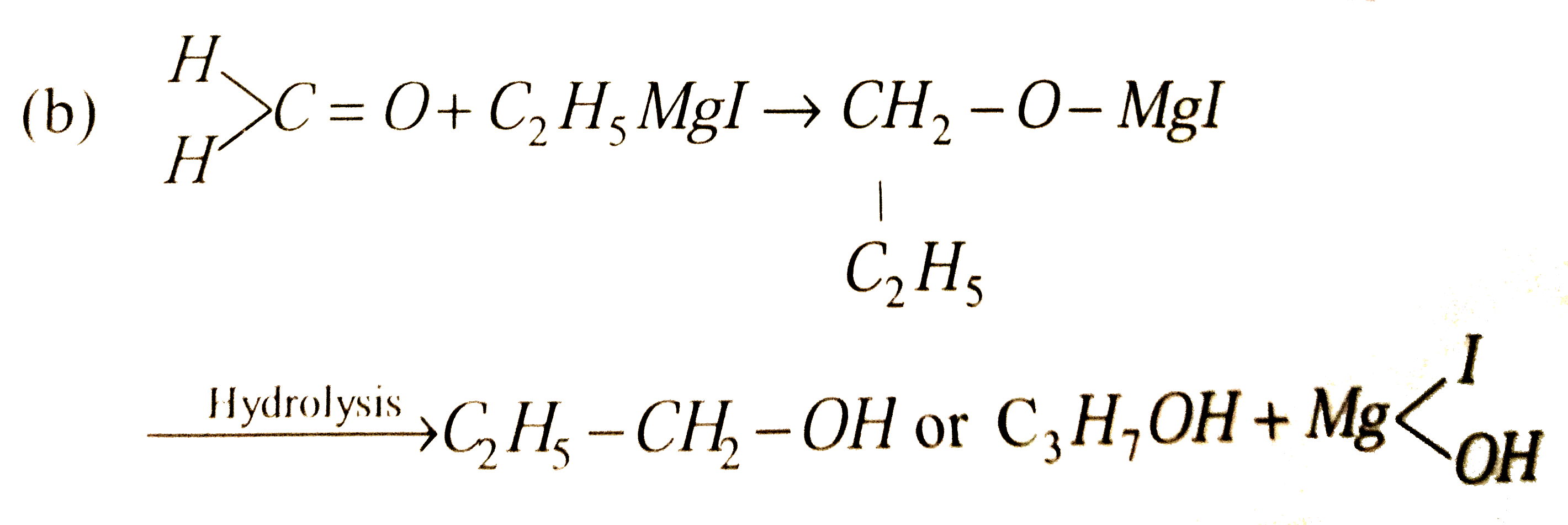reacts with HCHO to form last product :
A
B
C
D
Video Solution
Text Solution
The correct Answer is:B
|
Topper's Solved these Questions
- ALCOHOL, PHENOL AND ETHERBOOK - ERRORLESS CHAPTER - ALCOHOL, PHENOL AND ETHEREXERCISE - Ordinary thinking (Ojective questions) Properties of Alcohol , Phenol and Ethers
260 Videos
- ALCOHOL, PHENOL AND ETHERBOOK - ERRORLESS CHAPTER - ALCOHOL, PHENOL AND ETHEREXERCISE - Ordinary thinking (Ojective questions) Uses of Alcohol, Phenol and Ethers
20 Videos
- ALCOHOL, PHENOL AND ETHERBOOK - ERRORLESS CHAPTER - ALCOHOL, PHENOL AND ETHEREXERCISE - JEE SECTION (JEE Advanced 2018) More than one choice correct answer
1 Videos
- ALDEHYDES AND KETONES BOOK - ERRORLESS CHAPTER - ALDEHYDES AND KETONES EXERCISE - JEE Section (JEE (Advanced) 2018) Numeric answer type question
1 Videos
Similar Questions
Knowledge Check
C2H5MgI reacts with HCHO to form last product :
ACH3CHOBC3H7OHCCH3COCH3DCH3COOCH3Assertion : C6H5MgBr reacts with CO2 and forms benzoic acid.
Reason : CO2 acts an electrophile in the reaction.AIf both assertion and reason are correct and reason is correct explanation for assertion.BIf both assertion and reason are correct but reason is not correct explanation for assertion.CIf assertion is correct but reason is incorrect.DIf assertion and reason are both incorrect.C2H5MgI reacts with HCOOC2H5 in the presence of dry ether to give
AEthanolBEthanoic acidCPropanalDEthyl ethanoate
An organic compound (A) reacts with methyl magnesium iodide to form an addition product which on hydrolysis forms the compound (B). Compound (B) gives blue colour salt in Victor Meyer's test.The compounds (A) and (B) are respectively :
View SolutionThe amine which can react with C6H5−SO2−Cl to form a product insoluble in alkali shall be
View SolutionWhen ethyl alcohol (C2H5OH) reacts with thionyl chloride, in the presence of pyridine, the product obtained is
View SolutionWhen ethyl alcohol (C2H5OH) reacts with thionyl chloride in the presence of pyridine the product obtained is .
View SolutionWhen ethyl alcohol (C2H5OH) reacts with thionyl chloride, in the presence of pyridine, the product obtained is
View Solution

